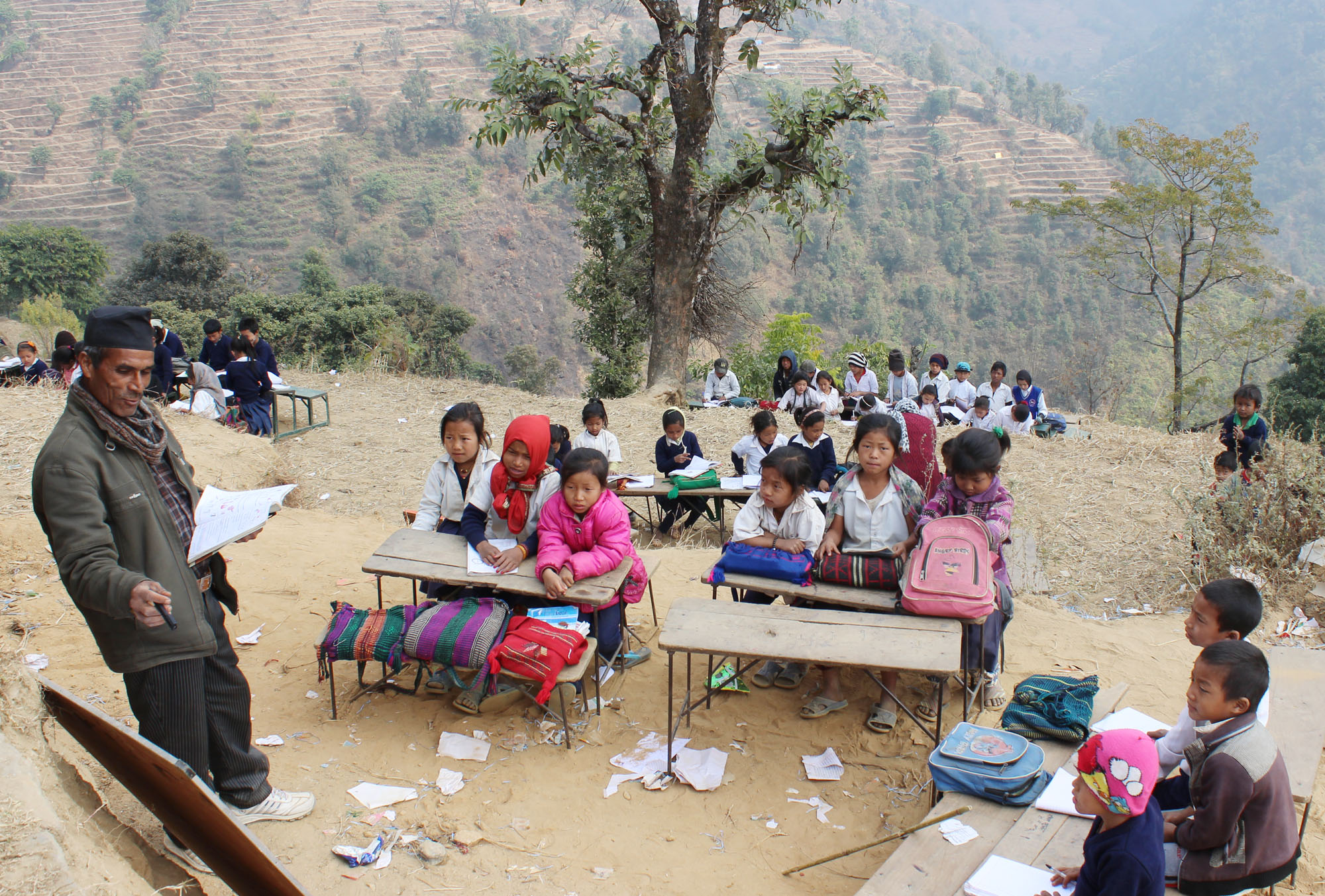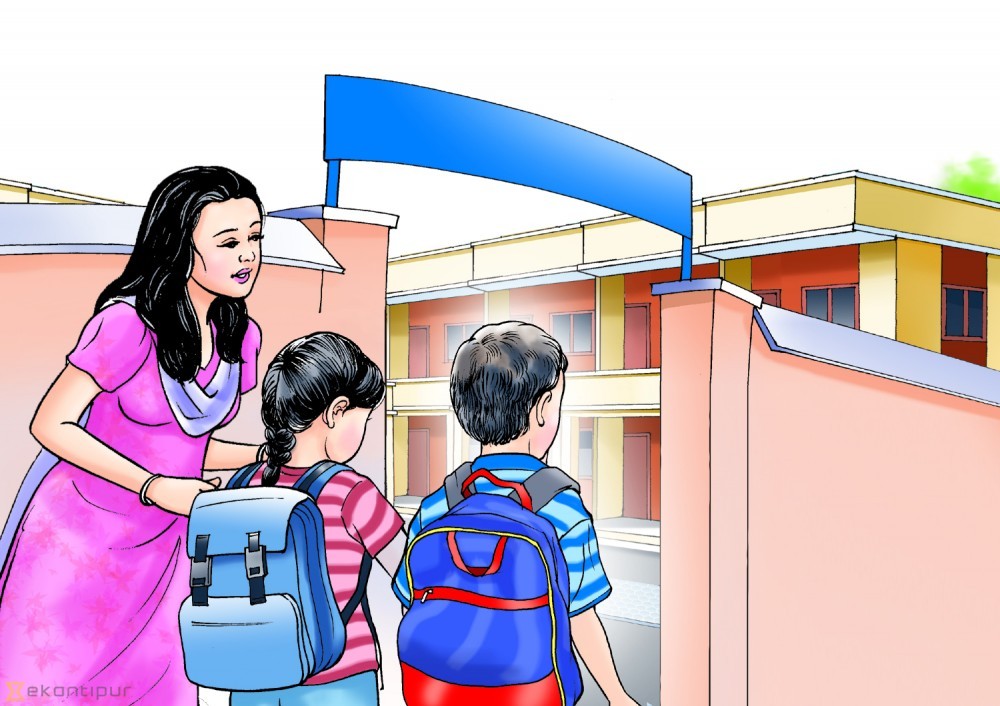National
Why Nepal’s public schools have a poor report card
A majority of public school teachers are affiliated to political parties. This gives them a defence against possible action if they fail to perform their duties.
Binod Ghimire
Nepal has made significant improvements in student enrolment at the school level. With around 97 percent of enrolment in grade one, Nepal is among the leading countries in South Asia when it comes to access to education. However, there are numerous challenges, especially when it comes to quality. Every time a new education minister takes charge, they vow to improve public schools. But results of the different national level examinations and various study reports suggest that such commitments never translate into effective action. The Secondary Education Examination results published in June showed a dismal performance of students from public schools. The exam is taken as a cumulative test of the students’ entire school level study. Besides, a recent report by the Education Review Office suggested that investment in the education sector has failed to yield desired results.
Here is everything you want to know why the quality of public schools is deteriorating and what possible interventions are needed.
Where do public schools stand in quality?
Until 2010, results of the School Leaving Certificate and district level eighth grade examinations were the only parameters for evaluating the quality of teaching-learning activities. Realising that examination results alone were not enough to evaluate the overall performance of students, the Education Review Office was established in 2010 with the sole mandate to assess the learning achievements of school-level students. Since 2011, the office has been testing the learning achievements of students of different grades annually. Seven different study reports have been made public so far while the office is set to come up with its eighth and final report later this year.
These reports suggest that the average achievements of the students have always remained below 50 percent, which means students achieved less than half of what their curriculum envisions. Worse, students’ learning achievement is falling by the year. A study carried out by the review office among fifth graders showed 72 percent of students cannot grasp mathematical concepts as intended in their curriculum while 32 percent of them don't even learn five percent of their course by the time they complete the grade. The report also presented a comparison with the study carried out in 2015 which suggested that the performance of students has gone down in four years. The average performance of grade five students in the subject, which was 500 in 2015, went down to 477 last year. The study was done using a multi-stage sampling technique and Item Response Theory where 500 was taken as the mean value of performance.
A similar outcome was seen in the study of eighth graders in the report unveiled by the review office last year. It showed the performance of students in mathematics slipped to 492 in 2017 from 508 in 2013. The achievement is similar in other subjects as well.

What are the reasons for the poor show?
A school is as good as its teachers. Therefore, teachers are primarily responsible for the poor performance of students in public schools. A majority of school teachers are affiliated to different parties, which provides them with a defence against any possible action if they fail to perform their duties. So, they are reluctant to take their job seriously in classrooms. Irregularity and absenteeism are common among public school teachers. Teachers have a major role in the politicisation of public schools too.
If government reports are anything to go by, 96 percent of public school teachers are trained and they are paid on par with other government employees. They also have a pension after retirement. In comparison, very few private school teachers have received training; a majority of them are paid less and are without after-service benefits. However, when the results are out, students from private schools outperform those from public schools. This is because teachers from private schools are sacked if they cannot perform well.
Lack of subject teachers is another reason for the poor show of the students. Large numbers of public schools lack subject teachers mainly in technical subjects like Science and Mathematics, and even English. This is why students perform poorly in these subjects.
Inadequate funding is a huge challenge. It is proven that countries cannot achieve targeted results unless they allocate 20 percent of their annual budget for the education sector. The Nepal government also has reiterated commitments in different global forums to allocating one-fifth of its national budget to the education sector. However, it has never honoured its commitment. Currently, over 80 percent of the government budget is spent on paying the salaries of teachers and staff while another significant chunk goes to infrastructure and textbooks, leaving less than five percent for quality enhancement.
The apathy of the political leadership and the Education Ministry also is to blame for the poor show of students from public schools. A majority of political leaders and officials have enrolled their children in private schools so they are least bothered by the disappointing results in public schools.

Has there been any policy intervention?
The Ministry of Education in 2009 introduced the School Sector Reform Programme, which aimed to improve public schools with due focus on increasing enrollment and improving infrastructure. After the programme ended in 2015, the ministry adopted the School Sector Development Programme the same year with a primary focus on enhancing the quality of education. Four years since the implementation of the programme, there’s no visible impact on students’ performance.
The government last year formed a high-level commission led by Minister for Education Giriraj Mani Pokharel to recommend steps that need to be adopted to reform policies in line with the changed political situation. The commission on January 15 submitted a 500-page report to the government with several recommendations for improving school education. The report, which has recommended controlling the monopoly of private schools by changing their registration as non-profit entities, has been kept under wraps at the Prime Minister’s Office. Members of the commission say Prime Minister KP Sharma Oli is hiding the report at the behest of private schools.

What steps need to be taken to effect improvement?
Ending politicisation is the primary precondition for improving public school education. Teachers should be kept away from politics and political patronage. Vacancies need to be announced regularly to induct fresh minds into the teaching profession and, if necessary, the incumbent teachers who fail to deliver should be retired to create space for young professionals. Since trained teachers have also not been able to deliver, the existing training modality needs to be revised.
The government must be generous when it comes to allocating the budget as per its global commitment. The learning outcome cannot be improved without the funds to acquire proper infrastructure, resource materials, libraries, laboratories and the relevant information and communication technology. There should be a provision of reward and punishment in place both for teachers and officials under the Education Ministry.
There is a strong voice that public school teachers and government employees must enrol their children in public educational institutions. This step would compel them to work to improve the quality of the schools where their children study. A partnership between better-performing private schools and the ailing public schools also could be useful for the latter to learn how privately managed institutions are doing better.




 5.44°C Kathmandu
5.44°C Kathmandu








%20(1).jpg&w=300&height=200)





